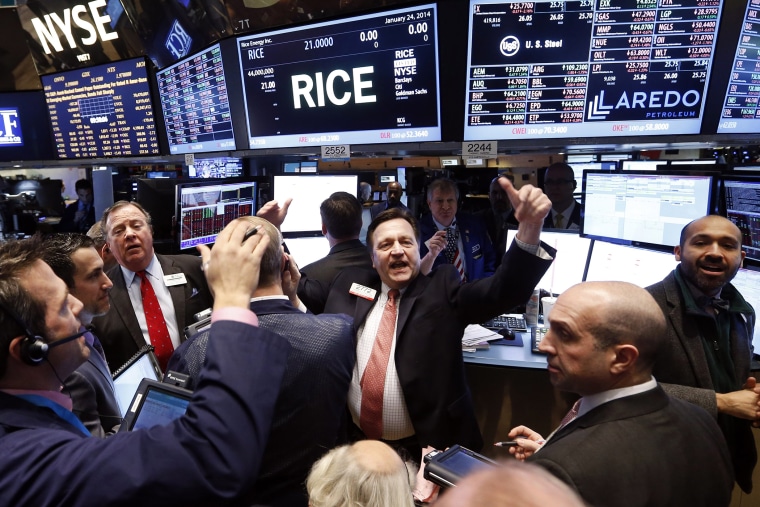During last year’s State of the Union address, many of us who care about income inequality were so excited to hear President Obama recite two words (“minimum wage”) that we failed to notice he omitted two other words -- “Wall Street.” There was no discussion of Wall Street in Obama's inaugural speech, given three weeks earlier, either--even though it was more emphatically a speech about inequality.
In his 2012 State of the Union, Obama pledged, “I will not go back to the days when Wall Street was allowed to play by its own set of rules.” The president did not reaffirm that promise in his 2013 speech. Perhaps he thought that, with several major financial regulations still being hammered out -- most notably the Volcker Rule, which largely prohibits proprietary trading by banks -- it was best to speak softly and carry a big stick.
Now the Volcker Rule has been issued, along with an important new mortgage disclosure rule and a disappointingly weak rule to increase transparency in derivatives trading. Indeed, three-and-a-half years after Dodd-Frank’s passage, more than half the implementing regulations have been issued in final form.
Often derided as a toothless tiger, Dodd-Frank is actually changing the way Wall Street does business. That shouldn’t make Obama complacent. It should embolden him to climb back into the bully pulpit and address some unfinished business.
It’s time to break up the big banks.
An irony of the 2008 financial crisis, which necessitated the unpopular, but necessary, bailout of banks deemed “too big to fail” is that it led to even greater consolidation. In 1990, the country’s five biggest banks held 9.7% of the nation’s banking assets, according to a recent report by SNL Financial. By 2007 it was 38.4%. Today it’s 44.2%.
This is the logical outcome of a banking deregulation binge that started more than 30 years ago and which Dodd-Frank reversed only at the margins. The investment class took bigger and more lucrative risks knowing that whenever a bank failed, the federal government would, in most cases, either bail it out or hastily arrange a shotgun marriage with another suitably large bank. Moral hazard begat financial instability, which in turn begat ever-greater gigantism in banking.
This cycle has been terrible for ordinary Americans but a bonanza for Wall Street and a major driver of inequality between the top 1% (really, the top 0.1%) and everybody else.
“If you run a bigger bank,” MIT economist Simon Johnson explained at a recent “too big to fail” debate, “you get a bigger paycheck.”
Recessions caused by banking crises are, history shows, especially difficult to recover from. Most of us have yet to recover from the 2007-2009 recession. Median household income -- at $52,000 -- is, incredibly, 4.7% lower than it was at the start of the economic recovery. (This calculation, and those that follow, correct for inflation.) Between 2009 and 2012, the last year for which data are available, income for the bottom 99% increased a mere 0.4%. But the 0.1% recovered just fine. Between 2009 and 2012, income for the top 0.1 percent rose 45%, from $4.4 million to $6.4 million. Most of this money went to corporate executives and financiers.
Dodd-Frank addressed the “too big to fail” problem by requiring big bank holding companies write “living wills” describing how best to dismantle them in the event of emergency and by increasing the federal government’s power to seize a failing bank and assign costs to the private sector. These were a step in the right direction. But given the megabanks’ complexity and their sprawling international footprint, could bank executives and the federal government really shut down a failing big bank quickly without tapping the U.S. Treasury? The market appears to think not. It demonstrates this by extending cheaper credit to mega-banks than to smaller competitors, on the apparent assumption that the mega-banks are taxpayer-guaranteed.
A better solution would be to prevent U.S. banks from becoming so big that their failure could take down the entire economy. This could be achieved in a variety of ways: raising capital requirements, for instance, or restoring the Glass-Steagall separation of commercial from investment banks, or directly limiting a bank’s size relative to gross domestic product.
In his State of the Union speech, Obama should say that Dodd-Frank was a good first pass at a problem that has evolved over several decades. Perhaps he could compare it to the Civil Rights Act of 1957, which achieved modest progress on voting rights but is remembered today for opening the door to more sweeping laws passed during the decade that followed. Ending too big to fail, he could say, is financial reform’s most urgent piece of unfinished business.
Alas, nothing Obama or his administration has said over the past five years suggests the president is willing to do this. That’s a shame, because ending “too big to fail” is a rare issue that enjoys some bipartisan support. Sens. John McCain and David Vitter, both Republicans, have actually co-sponsored legislation in this area, working with Sens. Elizabeth Warren and Sherrod Brown. The left and at least some on the right are ready to move. Now it’s time for the center to move, too.
An earlier version of this piece stated that income for the top 0.1 percent rose 45 percent from 2007 to 2009. The correct time period was 2009 to 2012.
